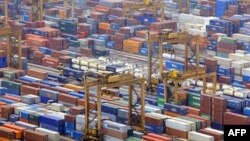The Asia-Pacific region currently accounts for about a third of the global population, one-quarter of global GDP, a major share of global growth, 26 per cent of U.S. exports, $1.2 trillion in two-way trade with the United States, and a huge proportion of biodiversity vulnerable to climate change.
Recognizing that America’s future prosperity and security are intertwined with the Asia-Pacific region, U.S. President Barack Obama made a strategic commitment to rebalance U.S. efforts and investments toward Asia.
A fact sheet, recently issued by the U.S. Department of State to the press in Washington, D.C., stated that “the United States will remain a strong, reliable, and active partner in the [Asia-Pacific] region and is investing diplomatic, public diplomacy, military, and assistance resources in a way that is commensurate with our comprehensive engagement.”
In expanding engagement with the Asia-Pacific, the United States aims to modernize and strengthen U.S. alliances; develop ties with emerging partners and support regional institutions to solve problems based on internationally-recognized rules and norms.
The U.S. aims to increase trade and investment; and expand economic growth; ensure a U.S. military presence that effectively supports U.S. engagement with the Asia-Pacific region; promote democratic development, good governance, and human rights; and expand people-to-people ties.
U.S. engagement has ensured peace and prosperity in the Asia-Pacific region for over 60 years, and its continued engagement will further enhance peaceful development. Currently, the United States is the leading investor in the Asia-Pacific region. U.S. direct investment in 2012 was $622 billion, reflecting a 35 per cent increase since 2009.
These investments support jobs and economic growth both in the United States and in the region, and signify long-term U.S. engagement in the economic growth and development of the Asia-Pacific region.
U.S. assistance is focused on supporting economic integration and trade; enhancing regional security; advancing inclusive economic development; strengthening regional institutions so they can effectively address problems; and addressing health and environmental problems that affect the region and the globe.
“As a Pacific nation that takes our Pacific partnership seriously,” said U.S. Secretary of State John Kerry, “the United States will continue to build on our active and enduring presence.”
Recognizing that America’s future prosperity and security are intertwined with the Asia-Pacific region, U.S. President Barack Obama made a strategic commitment to rebalance U.S. efforts and investments toward Asia.
A fact sheet, recently issued by the U.S. Department of State to the press in Washington, D.C., stated that “the United States will remain a strong, reliable, and active partner in the [Asia-Pacific] region and is investing diplomatic, public diplomacy, military, and assistance resources in a way that is commensurate with our comprehensive engagement.”
In expanding engagement with the Asia-Pacific, the United States aims to modernize and strengthen U.S. alliances; develop ties with emerging partners and support regional institutions to solve problems based on internationally-recognized rules and norms.
The U.S. aims to increase trade and investment; and expand economic growth; ensure a U.S. military presence that effectively supports U.S. engagement with the Asia-Pacific region; promote democratic development, good governance, and human rights; and expand people-to-people ties.
U.S. engagement has ensured peace and prosperity in the Asia-Pacific region for over 60 years, and its continued engagement will further enhance peaceful development. Currently, the United States is the leading investor in the Asia-Pacific region. U.S. direct investment in 2012 was $622 billion, reflecting a 35 per cent increase since 2009.
These investments support jobs and economic growth both in the United States and in the region, and signify long-term U.S. engagement in the economic growth and development of the Asia-Pacific region.
U.S. assistance is focused on supporting economic integration and trade; enhancing regional security; advancing inclusive economic development; strengthening regional institutions so they can effectively address problems; and addressing health and environmental problems that affect the region and the globe.
“As a Pacific nation that takes our Pacific partnership seriously,” said U.S. Secretary of State John Kerry, “the United States will continue to build on our active and enduring presence.”

















